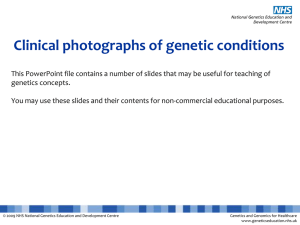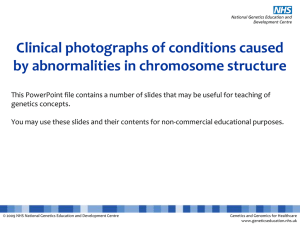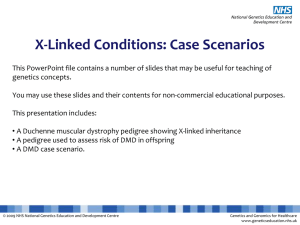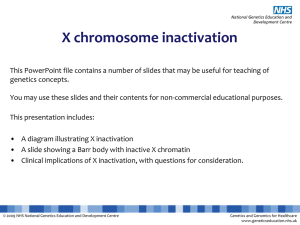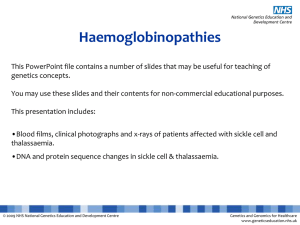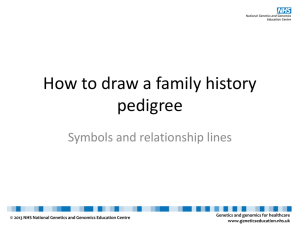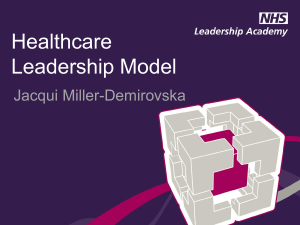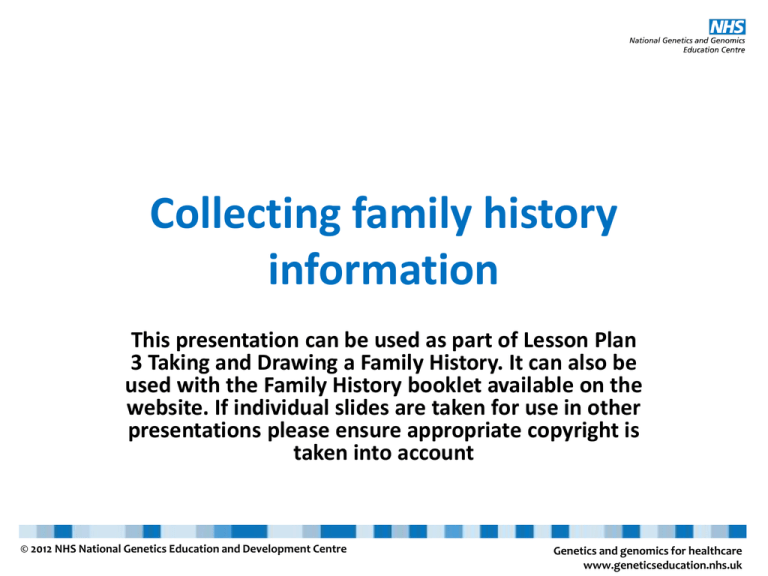
Collecting family history
information
This presentation can be used as part of Lesson Plan
3 Taking and Drawing a Family History. It can also be
used with the Family History booklet available on the
website. If individual slides are taken for use in other
presentations please ensure appropriate copyright is
taken into account
© 2012 NHS National Genetics Education and Development Centre
Genetics and genomics for healthcare
www.geneticseducation.nhs.uk
© 2012 NHS National Genetics Education and Development Centre
Genetics and genomics for healthcare
www.geneticseducation.nhs.uk
Why collect family history information?
•Patient concern
•Clinical feature
•Routine assessment
•Result of screening test
•Opportunistic
© 2012 NHS National Genetics Education and Development Centre
Genetics and genomics for healthcare
www.geneticseducation.nhs.uk
What information should you collect?
•Information depends on the context and reason for collecting it:
•Establish biological relationships
•Clarify the medical conditions that people have
•3 generations
•For each person:
•Full name
•Date of birth (or age)
•Date of death (or age died)
•Medical information (age at diagnosis)
© 2012 NHS National Genetics Education and Development Centre
Genetics and genomics for healthcare
www.geneticseducation.nhs.uk
How should the information be recorded?
•Longhand notes
•Family history form
•Family tree
© 2012 NHS National Genetics Education and Development Centre
Genetics and genomics for healthcare
www.geneticseducation.nhs.uk
Drawing a family tree
Marriage /
Partnership
(horizontal line)
Male
Female
/
Partnership that has
ended
Person whose sex
is unknown
P
Pregnancy
Offspring (vertical
line)
Miscarriage
X weeks
Affected Male &
Female
Parents and Siblings
Carrier Male & Female
© 2012 NHS National Genetics Education and Development Centre
Genetics and genomics for healthcare
www.geneticseducation.nhs.uk
Steps in taking and recording a
genetic family tree
© 2012 NHS National Genetics Education and Development Centre
Genetics and genomics for healthcare
www.geneticseducation.nhs.uk
Acting on the information collected
• Reassure
– Knowledge of the condition
– Local/national referral guidelines
• Refer
– To the GP or clinical genetics service
• Seek further advice
– Trusted sources of information
– Clinical Genetics Department On-Call Service
© 2012 NHS National Genetics Education and Development Centre
Genetics and genomics for healthcare
www.geneticseducation.nhs.uk
• Multiple closely related people with the same
condition
• Disorders which occur at a younger age than usual
(e.g. colon cancer, breast cancer, dementia)
• Sudden cardiac deaths in people who seemed
healthy
• Three or more pregnancy losses
• Medical problems in children of parents related by
blood
• Congenital anomalies, dysmorphic features and
developmental delay
• Clues specific to the condition of concern
© 2012 NHS National Genetics Education and Development Centre
Genetics and genomics for healthcare
www.geneticseducation.nhs.uk
www.geneticseducation.nhs.uk
© 2012 NHS National Genetics Education and Development Centre
Genetics and genomics for healthcare
www.geneticseducation.nhs.uk
Clinical Genetics Services
© 2012 NHS National Genetics Education and Development Centre
Genetics and genomics for healthcare
www.geneticseducation.nhs.uk
www.geneticseducation.nhs.uk
© 2012 NHS National Genetics Education and Development Centre
Genetics and genomics for healthcare
www.geneticseducation.nhs.uk
• Practising sheets and videos

